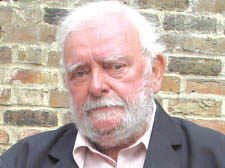|
|
 |
| |

Illtyd Harrington |
How the turbulent outcast morphed into a vote-winner
KEN Livingstone first came to public attention when he and Tony Banks turned the Queen’s portrait to the wall in Lambeth Town Hall.
They were young Labour councillors; this was not a seditious republican act. Fathers4Justice did much better storming the balcony of Buckingham Palace!
Twelve years later in April 1981, Ken burst onto the national stage in a cloud of sulphurous smoke. Labour had narrowly claimed control of the GLC. Our leader Andrew McIntosh expected to be elevated if not crowned as the GLC supremo. The next day he was swept aside. “Red Ken” had put fear into the fainthearted.
His intentions had been made clear, even his methods had been obscure. They called it a coup de grace.
A week earlier Ken came to see me. “Why are you so miserable, you old sod?” he said, in that now all too familiar nasal tone. Then he went on: “Of course, I want you to continue as my deputy as you will be the acceptable face of extremism.”
As it is said in the Bible: “And so it was.”
Over the next four years I saw him morph from Red Ken to Dennis the Menace and become as reckless and defiant as Evel Knievel. I witnessed him being fearless in the face of belligerent racists, and developing administrative competence.
Our mayor is now one of the most effective politicians in the UK, with increasing individual powers heaped on him by former Labour government enemies.
From being an outcast he became Labour’s main vote winner.
In 1983, faced with a devastating High Court judgment rejecting the GLC’s proposed Fares Fair policy that would have standardised fares at a lower rate as well as moves by the ultra-left among GLC members not to make a GLC budget, I led the group that wanted to obey the law. I told him that the Wicked Witch of the West at No 10 was waiting for us to break the law and that she had the legal weapons at hand to put in non-elected commissioners to run the council. The majority of the Labour group followed me.
My personal relationships with him were straightforward. My first loyalty was for the staff of the GLC and ILEA (Inner London Education Authority). We were seen in Downing Street as the main political opposition to Mrs Thatcher’s megalomania, particularly in the period following the end of the Falklands War. During this time I had several social encounters with Mrs Thatcher, but by this time she looked more and more like Gerald Scarfe’s wild-eyed bird of prey. To her, Livingstone was an unexpected challenge – “a turbulent priest’’.
Livingstone would have been a superb primary school teacher. Children relate to him instantly. He must be a good father and was an early “new man”.
John Mortimer, the playwright, wrote a generous and fulsome profile for the Sunday Times, in which Ken expressed the wish to be remembered as a second Herbert Morrison, Labour’s leader in London for 30 years. The next day a caricature of Morrison’s vanished from Ken’s office.
Now, he faces a severe challenge in the coming mayoral elections. If he hits the buffers, then Livingstone, on reflection, will no doubt accept he has not followed the words of the “Magnificat” and pulled “down the mighty from their seats”.
Perhaps, sensibly, he has settled for the congestion charge, a better bus service and the promise of more affordable homes.
ILLTYD HARRINGTON
Former deputy leader of the GLC |
 |
|
|
 |
|
 |
|